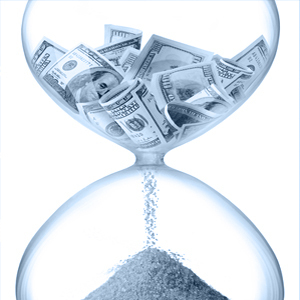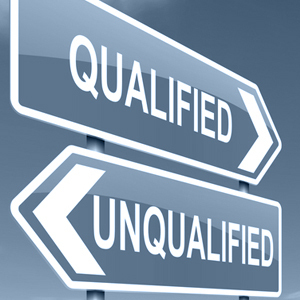Andy Paul's Blog, page 103
February 3, 2015
Five Keys To An Effective Sales Value Proposition
 Selling is all about helping a prospect make the decision to make a change. A sales value proposition (SVP) is one tool that salespeople should use to effectively communicate the value of the product or service that they are selling.
Selling is all about helping a prospect make the decision to make a change. A sales value proposition (SVP) is one tool that salespeople should use to effectively communicate the value of the product or service that they are selling.
I use the term “sales value proposition” because I rarely see salespeople use verbatim the value propositions that are generated by their marketing departments. For better or for worse, salespeople almost always shape the corporate value proposition into a format and wording that is easier for them to express and more immediately understandable by their prospects. Marketing may not like that this happens. But, it is a fact of life that a salesperson will mold a value proposition into a something that they feel is more relevant to their prospects.
Unfortunately, this is a hit and miss process and salespeople end up wasting time with potential prospects trying out new value propositions. Here are some tips to help sellers more quickly put together an SVP that effectively communicates the value of the change they are selling to potential prospects.
Here are five key value proposition attributes necessary to attract the attention of potential prospects and accelerate your momentum into the buyer’s decision-making process. Your sales value proposition (as well as the underlying product or service) must be:
1. Clear and Concise. Your sales value proposition must be concise and the value of what you’re selling has to be immediately clear to the customer. You must be able to instantly attract the attention of prospects in order to earn their time and attention in order to sell to them. This means that the problem your product or service purports to solve must be one that is evident and important to the buyer. If it takes too long to explain to the prospect what you can do for them, and why they should talk to you, then you won’t get that chance. Avoid using techno-jargon, acronyms and insider buzz words and keep it short. Home Depot’s old tagline “You can do it. We can help” is a great example of a clear, concise value proposition to emulate.
2. Obvious. The value your solution can create should be intuitively obvious to the customer. If your SVP is concise and clear then it will not only be clear to the prospect what you do, but also how it will create value for them. This is the “a ha” moment when the prospect can mentally picture the approximate value they will receive from your product or service. This also means that your sales value proposition must be expressed in terms and language that are familiar to your prospect so that they can quickly understand its relevance and value. (See the Home Depot example above.)
3. Adaptable. One central aspect that your SVP must address is that your product or service can integrate with the customers’ existing processes. This doesn’t mean that some of their processes won’t be affected or change. But at the level of a first contact, the potential prospect must be assured that buying and implementing your product or service won’t disrupt their entire company.
4. Scalable. A sales value proposition should address scalability and relate how your solution and the value it provides meet the future needs of the customer. Customers rarely say “I just want a solution that solves today’s problem.” The future is almost always an important consideration for a buyer making a decision. ‘Will this still support my needs in 2-3 years?’ or ‘Can this investment help me grow faster than I currently forecast?’
5. Justifiable. The SVP needs to touch on the value, and the return on investment, delivered by your solution. You can address this most effectively in your SVP with a reference to current customers. “Our customers average a 19% increase in productivity.”
Lastly, you can combine multiple items, like #3 and #4 above with #5, to create a concise ending to your sales value proposition, like “Our customers on average experience a 11% increase in sales productivity (justifiable) within the first 6 months (adaptable) and a 25% increase over the first 3 years of usage (scalable).”
The post Five Keys To An Effective Sales Value Proposition appeared first on Andy Paul | Strategies to Power Growth.

January 29, 2015
The Myth Of The One-Time Discount
 Time is not forever. But discounts are.
Time is not forever. But discounts are.
Everyone has been in this situation: the end of the month is fast approaching and you don’t quite have your numbers in hand. It is not panic time yet, but the big deal you forecasted to close this month has lost momentum and it is threatening to carry over into next month.
You call Larry, your primary point of contact and chief internal advocate at your prospect, ABS, Inc. He says the deal has gone to Purchasing. He conferences in Ed, the Purchasing manager, who says the paperwork is making the rounds to get signed off. You had offered ABS a 3% discount contingent on their placing the order this month, before 4pm on the 31st. It is now the 29th, and you still haven’t received the order from the ABS purchasing department.
You can hear the tick-tock ticking of the clock on the wall. Actually, it’s a digital clock, so maybe that noise is just your elevated blood pressure pulsating in your temples.
Uncertain about what to do next, you confer with your boss, Brian. Brian agrees, “We really need this order this month. Let’s offer ABS another 2% off if they get the order in by tomorrow.” You relay the news to Larry at ABS. “Hey, I can give you another 2% off the price. But, only if I absolutely, positively receive your order before our month end, which is at 4pm Friday.” Larry seems excited by the news and says he’ll check with Ed to see if that will move things along.
Well, it does. But not how you would like. And you have just unleashed a cascade of unintended consequences that will have an lasting impact on the future profitability of your business with ABS.
First, you just guaranteed that the order won’t be received on time. After you hang up with Larry he calls Ed in Purchasing and brags about being a hero because he just renegotiated the deal and extracted an extra 2% discount from you. Ed heaves a deep heavy sigh because now he has to re-do the purchase docs to reflect the lower price. “I thought they needed the order by tomorrow.” Larry shrugs and says “Don’t worry about it. They seem pretty anxious to get our business. So, I’m sure they’ll accept our order no matter when we give it to them.” Sure enough, you get the order from ABS on the first business day of the next month.
There Is No Expiration Date For Discounts
This leads to the second unintended, but certainly not unforeseen, consequence in that even though the order came in on the 1st day of the next sales month it still had the original 3% and the extra 2% discounts included. My experience over the years has been that approximately 95% of all companies (and 100% of all salespeople) will not challenge the customer for taking the extra discounts even though the order was submitted late. Here is how that situation plays out.
You bring the order to your boss. Brian challenges you on the discount. “Dude, we’re not giving this stuff away. The order didn’t come in before the end of the month so the discounts are no good. Go back and get a corrected order for the right price.” In fact, Brian doesn’t really care that the customer took the discounts, he just doesn’t want to appear weak in the eyes of his boss, Stan, the VP of Sales. So he is going to reject the order and send you back to confront the customer, knowing full well that it runs the risk of further delaying the order. Or making it go away. But, whatever happens, it won’t be his fault.
Except that before you can get back to ABS, Stan, your VP of Sales, walks into Brian’s office while you’re standing there and asks why the order from ABS Inc last month hasn’t been entered into the system yet. Brian doesn’t want to deal with this so he motions to you to explain to Stan why the order was not received on time. Stan’s definitely not happy when you explain about the discounts and not receiving the order on time. But, then you launch into your song and dance about how it would endanger the great relationship you have built up with this strategic customer if Stan and Brian were to reject the order. In addition, it would embarrass your primary internal advocate Larry inside ABS. So, Stan relents and agrees to accept the discounted order.
One Time Discounts Become Permanent Price Reductions
Now you run head-on into the third unintended consequence which is that your base price to ABS is now 5% lower than it was last month. Salespeople suffer from situational amnesia. Customers don’t. A salesperson only sees a discount as a tactic to close orders. He or she only remembers the times that it worked and not the 95% of the times that it didn’t. But as far as your customers are concerned your discount was not a one-time event but a permanent reduction in your price.
Once you use discounts as an incentive to customers to close an order they’ll remember that they can wait until the last week or even last day of the month to extort an additional discount from you. All the customer has to say is that “The order’s in Purchasing. Trust me. I’m trying really hard everyday to push it along but I just don’t know when it will see the light of day…” Empty silence fills the phone line while the customer waits as you furiously try to calculate how big a discount it will take to dislodge the order from Purchasing….
Don’t be blind to the unintended consequences of the one-time discount. If you hand out discounts like candy at Halloween, just to accelerate orders that you’re going to receive anyway, it will come back to bite you in the form of reduced margins over the long run.
The post The Myth Of The One-Time Discount appeared first on Andy Paul | Strategies to Power Growth.

January 28, 2015
Sales Tip Video: 3 Skills Sales Reps Need To Master
What skills do sales reps need to master in order to accelerate and improve their sales results?
Watch this short video excerpt from my conversation with best-selling author (Smart Calling) and leading sales trainer Art Sobczak as we discuss the specific skills a sales person needs to work on and perfect in order to consistently improve their sales results.
Among other topics Art talks about the importance of:
• Examining what has worked in the past and repeating your success
• Repetition and practice in having relevant sales conversations with prospects;
• Developing focused, value-based messages that attract the customer’s attention
• Relying on live person-to-person conversations with prospects instead of social interactions.
This is relevant content we all need to remember. Click below to watch it now!
(To learn how to view my entire conversation with Art, click here.)
// ]]>
The post Sales Tip Video: 3 Skills Sales Reps Need To Master appeared first on Andy Paul | Strategies to Power Growth.

January 27, 2015
Slow Buying Decisions: Are You Part of the Problem or the Solution?
 When a sales opportunity slows down, whose job is it to get it moving?
When a sales opportunity slows down, whose job is it to get it moving?
I attended a sales conference once where it was suggested that just as customers have the ability to use social media and other forums to publicly rate their suppliers, so too should sellers have a forum to rate their buyers. The suggestion was offered in a somewhat humorous vein but there was an air of seriousness behind it. One of the main rating criteria for the customer that was put forth was slow buying decisions. Was the customer a “slow buyer?”
Listening to this, I thought more about this common sales perception that when a deal that you’re working on slows down, and loses momentum, that it invariably is the fault of the prospect. Undoubtedly, there are multiple valid reasons why a prospect will slow down the pace of their buying process. Organizational upheaval, changes in their market, fluctuations in the economy and stock market, are examples of the changes that can have an impact on a prospect’s buying process.
However, more often than not, the party responsible for a deal that has stalled is the person you see when you look in the mirror in the morning. Why?
Are Prospects Waiting For You?
First, let’s look at the customer decision making process. There are several different perspectives on how many steps are in a customer’s buying process. Some say 4 (AIDA). Others think 5. I happen to believe that there are many more steps in a customer’s buying process. However, irrespective of the number of steps there are in your prospects’ buying process there is one hard and fast rule. The prospect will not move from one step of their buying process to the next until their information requirements for the current step have been completely fulfilled.
And, you must keep in mind that your prospects don’t possess a limitless store of time. They’re just like you in this regard. Time is at a premium and they want to make an informed purchase decision with the least investment of their time and resources possible. No customer ever sets out to buy a product or service by saying “I want to take as long as possible to make this decision.” They don’t want to spend 6 months making a decision that they could make in 2 months if they could receive the information, insights, context and value they required from a seller in order to make an informed decision faster.
If you aren’t quickly supplying your prospect with the information they need to continue to move through their buying process, and meet their objective to make a fully informed purchase decision with the least consumption of their resources and time possible, then your dealings with them are going to come to a halt.
The Buyer’s Process Doesn’t Stop For You
But, that doesn’t mean that they are not continuing their evaluations of the competition. They are. It is important to remember that your prospect’s buying process is not monolithic. It is not a giant decision-making process that includes all the vendors or alternative solutions the prospect is considering. Your prospects have a distinct buying process for each solution/vendor they are evaluating. They could be on Step Four of their decision making process with you while at the same time they are on Step Sever with one of your competitors. The beat goes on. With or without you.
A study by DemandGen and Genius.com in 2010 titled “Inside the Mind of the B2B Buyer” contained the finding that 95% of B2B customers selected the seller who provided them with ample content to navigate each step of their buying process. If you aren’t giving the customer the information they need to progress from one step of their buying process to the next, then your chances of winning their business are pretty low.
Proactively Define The Steps To A Decision
So, if you’re working on an opportunity with a well-qualified prospect that suddenly slows down, don’t point fingers. Do some quick investigative work. Where is the prospect in their buying process? What information is the prospect waiting on from you to move forward that you haven’t supplied?
If you don’t know the answer to this question, don’t guess. Ask. And, don’t delay. Here’s what worked for me:
1. Meet with the prospect and do a quick recap of their requirements and the steps you have accomplished so far in their buying process with you. Review from your first contact with the prospect and work toward the present. It should become clear what the prospect needs from you. If is isn’t, don’t be afraid to ask. Frame your question to the prospect in the context of confirming your understanding of what the next steps in their process will be. They’ll correct you if you’re off base.
2. Map out a schedule with the customer of the information that they will need from you now through their decision point and agree on the timeframes when you are going to provide it. Invariably this schedule, and the information required, will change as the buyer continues through their process. But, you will have secured the prospect’s commitment to a next step with you and it gets you back into the game. And, you may also have something that your competitors don’t: the prospect’s schedule to work with you to their decision point.
When the deal you’re working on slows down, don’t point fingers. Be proactive and be the solution to get it back on track.
The post Slow Buying Decisions: Are You Part of the Problem or the Solution? appeared first on Andy Paul | Strategies to Power Growth.

January 26, 2015
If You’re In Sales, Stop Using Away Messages In Your Email
 Seriously.
Seriously.
Each week I send an email newsletter to thousands of subscribers in the sales profession. And, each week after the newsletter’s delivered I receive a certain number of “away messages” from subscribers that are out of their offices.
You might think that you are being helpful by telling people that you are away from the office and won’t be able to return their phone calls or emails for the next three days. But, there are several things wrong with that logic.
First, it is 2015. Not 1990. Everyone has a smart phone, including your prospects and customers.
Second, everyone understands that smart phones provide ubiquitous phone, messaging and email coverage, including your prospects and customers.
Third, no one believes for a second that your access to emails or phone messages will be so very limited that it will prevent you from being responsive to a prospect or customers for three days, including your prospects and customers.
Is this really the message you want to send to your prospects and customers? You’re supposed to be fighting for their business, proactively delivering value to establish a competitive advantage, and suddenly you’re giving them obsolete excuses about why you’re completely inaccessible?
In my role as CEO of a small business, I make the purchase decision on a range of products and services. If I’m working with salesperson and I get an away message stating that they’re going to be out of the office for three days and they’re non-specific about when they’ll respond to me, then I make the decision that they aren’t really serious about winning my business.
“I’m on travel the next three days and will have extremely limited access to email.” Really? Where are you going to be, Antarctica?
“I’m away at a conference until Wednesday. I’ll return your email and messages when I return.” Where’s the conference? On a submarine?
Being away from the office on business is not a vacation. Nor is it an excuse to stop being responsive and engaged with your prospects. Your prospects’ buying process doesn’t stop just because you are on an airplane.
It is so easy today to structure your work so that you can continue to stay engaged with your active prospects while you are traveling.
Traveling across the country on a plane? Most airplanes these days have wi-fi so you can stay connected. This should actually increase your responsiveness because you don’t have the distraction of phone calls. Answer your emails in real-time instead of watching that episode of TV you downloaded prior to your departure.
Going to a trade show or attending a conference? Answer emails and phone calls on a break. Or during your lunch.
The bottom line has to be that it should be transparent to your prospects whether you are in the office or out on travel. Your fundamental responsiveness should not change. Don’t use being out of the office as a crutch for not being in touch. It is up to you to make the commitment to make that happen.
If you’re going on a personal vacation and you plan to be truly and completely going off the grid, then use an away message. But, be very clear in your message about who will be responsible for covering your calls. Here’s a few important rules to follow:
• Don’t include a list of names and numbers in your away message of colleagues that your prospects or customers can call in your absence. Don’t ask the customer to make yet another call in your absence. It’s not their fault you’re out of the office.
• Best practices are that a colleague is assigned the responsibility to monitor your email and voice mails in your absence and to treat your accounts like their own. This means that prior to your departure you will fully brief this person on the opportunities you’re working on, the types of issues that may arise and the responses that will likely be required.
• Management has to be committed to maintaining an overall level of responsiveness. This means scheduling specific people to cover for those who are out of the office. This includes returning calls, responding to emails and entering required information into the CRM system.
Personally, I don’t use away messages. When I’m on personal travel, I prefer to invest a bit of time each day to return emails and phone calls. As a result, I’m more relaxed and sleep better on vacation knowing that my clients’ needs have been met. After all, isn’t that what vacation is for?
The post If You’re In Sales, Stop Using Away Messages In Your Email appeared first on Andy Paul | Strategies to Power Growth.

January 23, 2015
Sales Tip Video: Treat Sales Leads Like Scratch Off Lottery Tickets
Potential is a magical word for sales people. It conjures up all sorts of possibilities. As salespeople, we know there are no such things as guaranteed winners. Give us sales opportunities with “potential” and we will convert some number of these into orders.
So, how should you determine the potential of your sales leads? Watch the video below to learn the simplest, most reliable way to accomplish this. Hint: the unscratched lotto ticket never pays a prize.
The post Sales Tip Video: Treat Sales Leads Like Scratch Off Lottery Tickets appeared first on Andy Paul | Strategies to Power Growth.

January 21, 2015
The Cure for Buyer’s Remorse
 People will tell you that buyer’s remorse is a perfectly normal reaction on the part of your customers. That it always happens. However, that’s not true. Buyer’s remorse is neither normal, or even necessary, if you take the right steps to prevent it.
People will tell you that buyer’s remorse is a perfectly normal reaction on the part of your customers. That it always happens. However, that’s not true. Buyer’s remorse is neither normal, or even necessary, if you take the right steps to prevent it.
According to a definition of buyer’s remorse I found online ‘Buyer’s remorse is an emotional response on the part of a buyer in a sales transaction, which may involve feelings of regret, fear, depression or anxiety.’
Regret. Fear. Depression. Anxiety. Are these the typical emotions or feelings that we normally would associate with a long, healthy and mutually profitable relationship with a customer?
Imagine the upbeat testimonial you would get from a customer who experienced these emotions about buying from you: “I was filled with self-loathing about my decision to buy from XYZ, Inc. But despite my doubts and anxieties about their product’s abilities to meet our requirements it hasn’t been as bad as I feared.”
The fact is that buyer’s remorse often points to a missed opportunity on the part of a seller to prevent it from occurring in the first place. Buyer’s remorse is a signal from your customer that their decision to purchase from you was not an affirmative choice to buy the absolute best option. Instead, it points to your customer’s decision being one of choosing what they perceived to be the least bad, or least risky, of their alternatives. In short, buyer’s remorse is a sign that you didn’t establish a sufficient level of trust with the prospect and make yourself their clear choice.
Risk is a trigger for fear, regret and anxiety. When a customer chooses to buy from you, the person making the decision may have a lot at stake personally. A buyer could fear that if your product or service doesn’t perform as promised it could negatively affect their career. A buyer’s anxiety could be based on the fear that a manager or peer inside the company will challenge his or her decision based on the perception of a better solution being available..
To mitigate this perception of risk, and to give your customer the cure for buyer’s remorse before it happens, you have to make it easy for the customer to choose you by providing value throughout the sales process. Here are 4 fear-reducing, and trust-building, steps to take:
Put The Customer First
Your prospects want to make fully informed purchase decisions with the least investment of their time possible. To make good decisions, they need timely information and insights from you about the products or services they are evaluating. The key is to make it a priority to always be responsive and only use your prospect’s time only when you have value to deliver. Remember, being responsive is not the same as being the first to respond. Incomplete answers to questions, even if they are delivered quickly, is the same as not responding at all. Waste the prospect’s time and they’ll stop giving it to you. Make the prospect a priority and they’ll notice.
Deliver Value With Your Insightful Questions
Even better than providing insights to your prospects is to ask them insightful questions that will help them better understand their requirements and the ultimate solution they need. Delivering insights in the form of questions involves the prospect in developing the answer to the questions. Which means your customer begins to collaborate with you and develop ownership in the solution that you are selling. What are the three big insightful questions that you can ask that will help shape what the buyer envisions to be the optimal solution to their needs? Remember, you have to earn some trust from the prospect before they will feel comfortable sharing answers these questions. Make sure you’ve invested your time to understand the prospect’s business and their concerns and be able to talk in their language. Then, they’ll be more open and will begin to collaborate with you.
Provide Compelling Validation
To make informed decisions buyers need context for the information you have provided them. One of the best forms of context is 3rd party validation. Buyers will take comfort from knowing that others before them have made this journey with you. This validation can come from white papers, case studies, video testimonials or customer reference calls. Another way to provide context and validation to a prospect is through simple, well-crafted sales stories that quickly illustrate how other customers have used your product or service to solve problems similar to theirs. (Read Chapters 34-37 in my book Amp Up Your Sales to learn how to develop and master telling these stories.)
Right-size Your Offer
Right-sizing means to align the size of your offer with the customer’s tolerance for risk. Don’t confuse their budget with the decision maker’s tolerance for risk. Your prospect may have the requirement for 10 widgets but they could be anxious about your ability to perform. Or they may be concerned about their own ability to perform. So, reduce their perceived decision-risk and implementation-risk by proposing to sell and install 1 widget. Establish a track record with the first widget delivery and then sell them 9 more. This will let your customer sleep and night and will eliminate many anxious phone calls. Putting the interests of the customer first in this way is sound strategy to increase trust.
Finally, it is important to keep in mind is that persistent buyer’s remorse can foreshadow a problematic post-sale customer relationship. In the absence of trust, any discrepancy in how your product or service performs compared to your pre-sale commitments can set off a firestorm of recriminations. The remorseful buyer will hold you to a higher standard and expect nothing less than perfection.
The post The Cure for Buyer’s Remorse appeared first on Andy Paul | Strategies to Power Growth.

January 20, 2015
Four Simple Rules of Price Qualification
 I received an email advertising a webinar that was to be held on the subject of the “dreaded price objection.” The promise was that if I invested 50 minutes of my time I could learn how to find out “what people really mean when they say you’re too expensive.” Really? That doesn’t require a lot of translation.
I received an email advertising a webinar that was to be held on the subject of the “dreaded price objection.” The promise was that if I invested 50 minutes of my time I could learn how to find out “what people really mean when they say you’re too expensive.” Really? That doesn’t require a lot of translation.
It has been my experience that when a customer tells me that my product is too expensive that what they usually mean is that my product is just too expensive. It isn’t an objection. It is a fact. Sometimes a customer just can’t afford what you are selling. The key is to be bold, do your job and take the necessary steps to qualify the prospect on price. You can’t afford to waste your limited selling time in a fruitless attempt to convince an unqualified prospect to accept your price when what you need to do is invest your time to develop some new prospects that don’t have the same budgetary constraints.
For instance, I once stopped into a Bentley dealership. I really like the Bentley Continental Supersports. Who wouldn’t want one? But its $260,000 price tag had about three too many zeros for my checkbook. If the Bentley salesperson thought that he was going to navigate the shoals of my price objection and arrive at a signed purchase contract then he would have wasted a significant amount of his limited sales time with me. In this case, I never got the opportunity to voice my ‘price objection’ because the salesperson took one look at the car I drove up in and made himself scarce before I even walked in the door.
Here are four simple rules of thumb about price qualification and price objections that will help you make sure you put your sales times to its most productive use.
1. Price qualification is an agreement about value. Price qualification means to reach a preliminary agreement with the prospect that their assessment of the value that they will receive from your product or service is proportional to your price. In other words, you have reached a tentative agreement about the value the prospect will receive for the dollars that they are going to pay you. Qualification on price and value doesn’t mean that a prospect is in love with your price. But it does mean you’re in the ballpark and any further discussions of price will become a negotiation about scope and deliverables, not handling an objection.
2. A price objection is a valid reason to disqualify a prospect. Disqualifying a prospect on price must take place early in your sales process. A true price objection from your prospect late in the sales cycle means that you misplaced your backbone at the moment of truth and didn’t disqualify them when you had the opportunity. They were never a true prospect for your product or service and you just wasted a lot of your sales time with someone who was never going to buy from you.
3. Be direct with a prospect about your pricing. Salespeople have developed an unhealthy fear of the price question. It scares them. Like zombies or movies based on Jane Austen novels. There is no mystery to qualifying on price. The shortest distance between two points is a straight line. Do what you do best. Ask the right questions of the customer to understand their requirements and make sure that they are aligned with your value proposition and capabilities. And then talk price and value with the prospect based on their requirements.
4. You can’t get a price objection from a truly qualified prospect. As discussed in #1 above, an intrinsic part of prospect qualification is a rough agreement on price and value. If the prospect is still pushing back on price but wants you to move forward with them in their buying process, then you didn’t effectively qualify them on price. No matter where you are in the prospect’s buying process you need to stop and re-qualify them on price. If you think you are too close to the situation then you might need help. Call in a manager or colleague, an objective 3rd party, to help you re-qualify.
Lastly, if you disqualify a prospect on price, don’t let them persuade you to keep on selling to them. It is possible the buyer has a hidden agenda and is using you in order to advance it. Don’t let a prospect consume your selling time in order to use you as a leverage point to negotiate a better deal with your competition.
The post Four Simple Rules of Price Qualification appeared first on Andy Paul | Strategies to Power Growth.

January 16, 2015
Great Selling is About Quickly Developing Trust
In today’s video from my series of Sales Acceleration Interviews with leading sales experts, I talk with Mark Roberge, Chief Revenue Officer for HubSpot’s Sales Division, about the strategies sellers should take to quickly develop trust with their prospects.
In this excerpt from our extended discussion of sales acceleration strategies, Mark identifies the essential steps a seller needs to master in order to accelerate customer decision making.
Among the steps Mark specifies are:
1. Quickly developing trust with people who don’t know you (i.e. buyers.)
2. Leveraging trust to win permission to ask great questions.
3. Tailoring your normal sales stories to resonate with the prospect’s particular situation.
This is timely advice for the start of the new sales year. Click on our smiling faces below to watch and learn now!
Want to watch my entire conversation with Mark Roberge? Click here to learn how.
The post Great Selling is About Quickly Developing Trust appeared first on Andy Paul | Strategies to Power Growth.

January 14, 2015
Sales Tip Video: Do You Stop Selling Too Soon?
Are you ignoring the most important sales call of your sales cycle?
Salespeople routinely dig a hole, and throw themselves in it, after they close an order with a customer. Here’s how it plays out. You receive an order from a new customer, ACME Technologies, and your instinct is to quickly move on to the next prospect before Larry, your new customer at ACME, calls and asks a question that you are afraid of answering out of fear that it will cause him to change his mind.
Do You Stop Selling Too Soon?
The problem here is that even though you have an order, you haven’t finished the job of selling the customer. Your selling process doesn’t stop when you receive an order. There is one more very important step to take. One that can make the difference between having a “one-and-done” customer and a long-term relationship with a loyal, profitable customer.
Watch my video to learn about the most important sales call you should make.
The post Sales Tip Video: Do You Stop Selling Too Soon? appeared first on Andy Paul | Strategies to Power Growth.

Andy Paul's Blog
- Andy Paul's profile
- 4 followers





